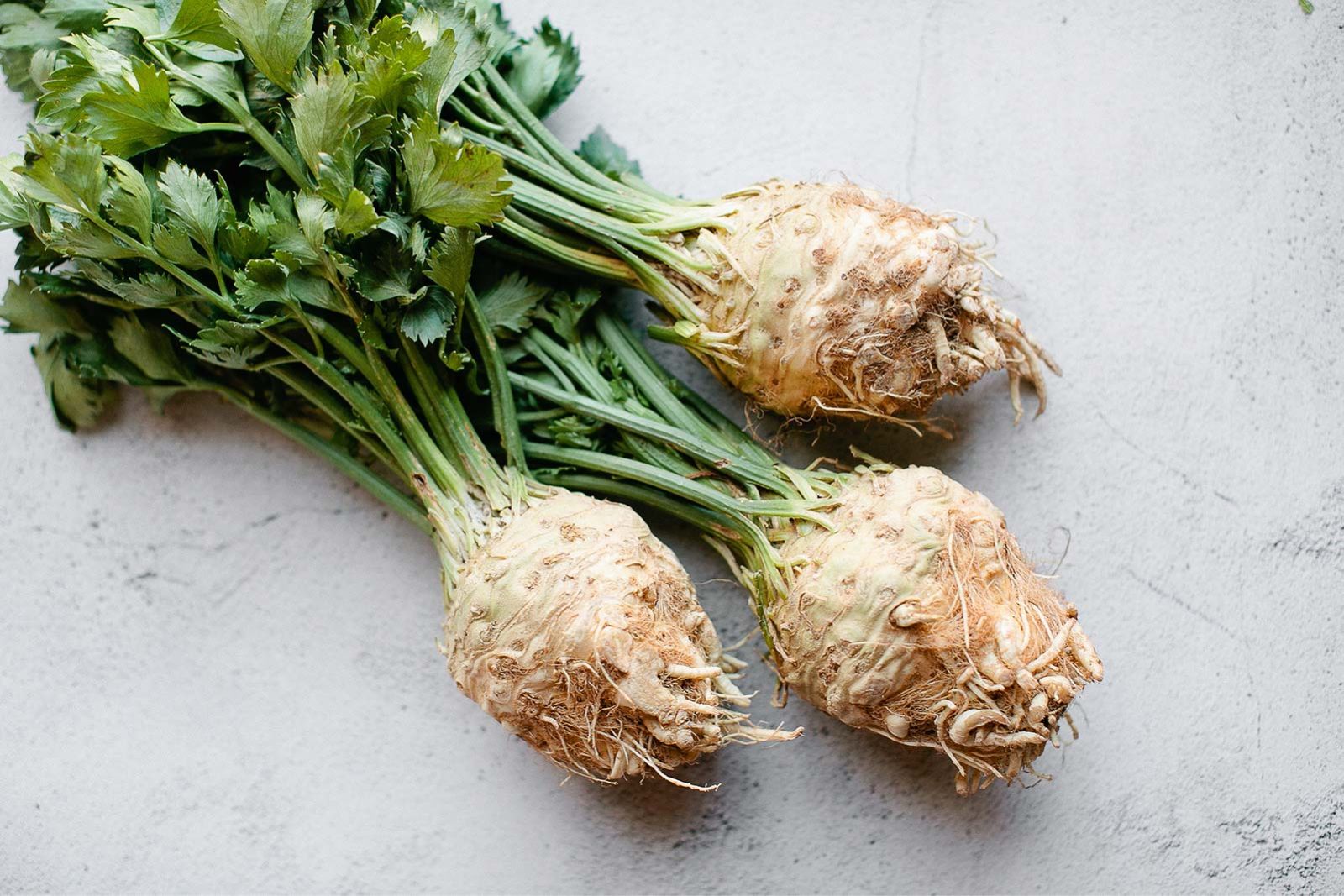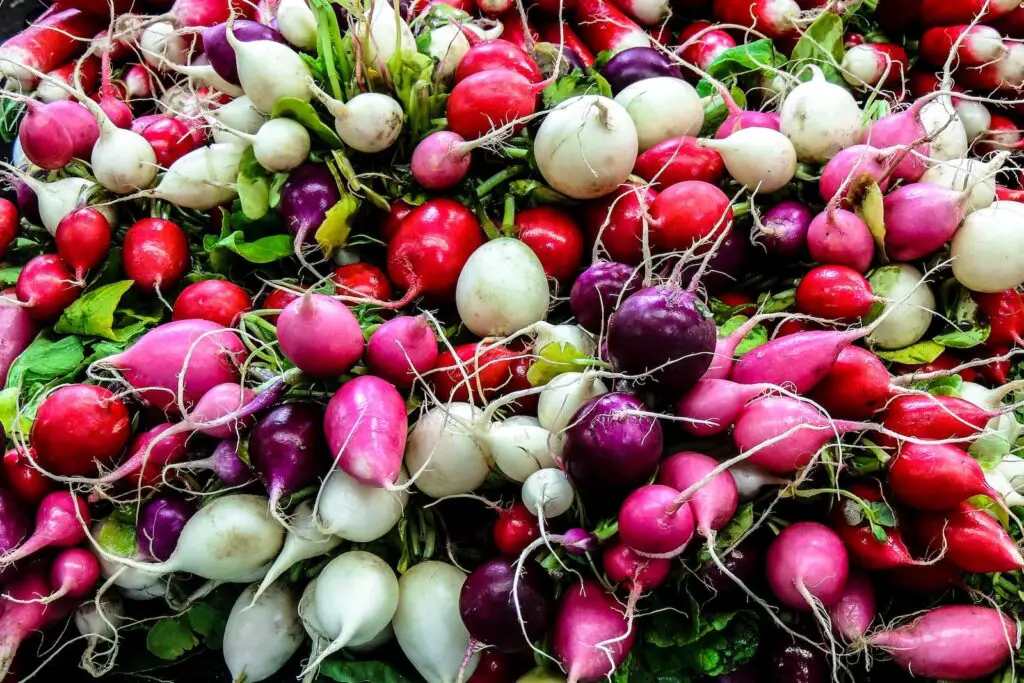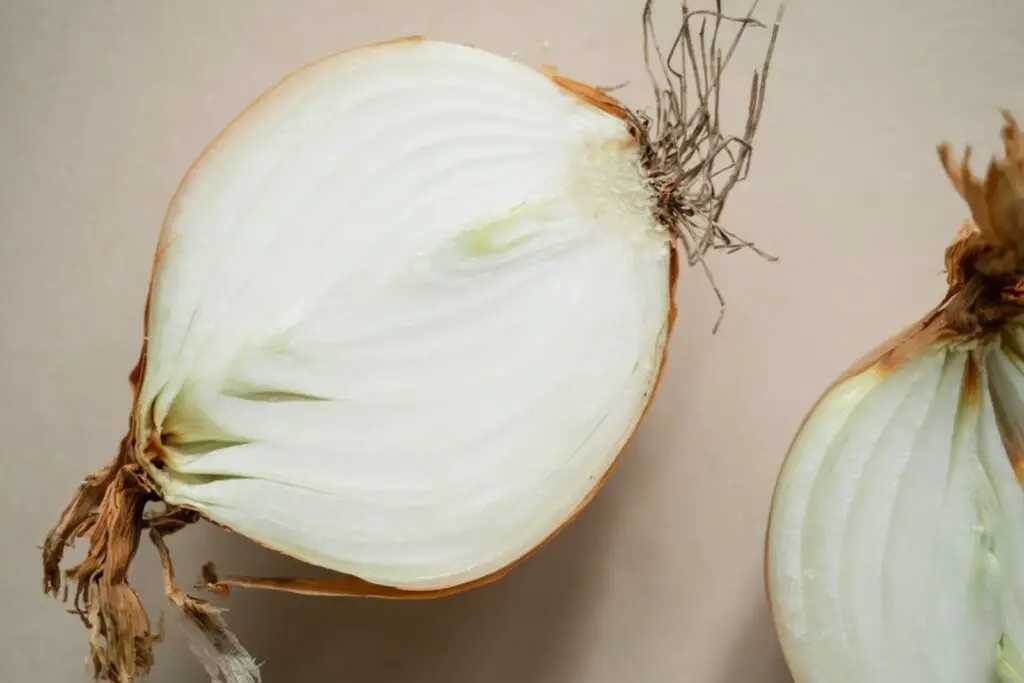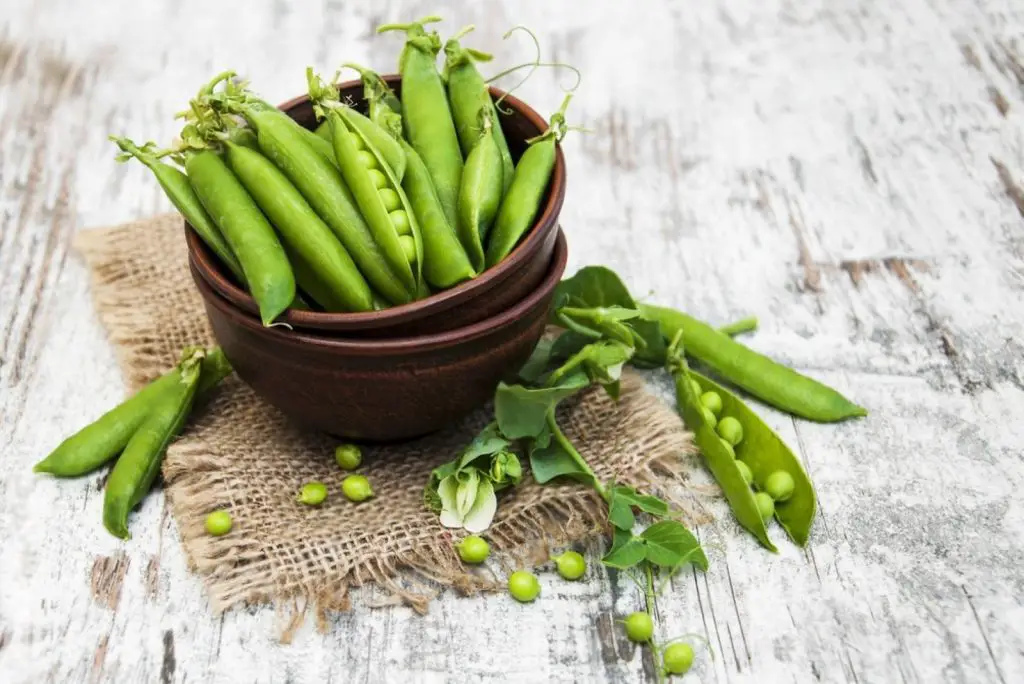
Celeriac, also known as celery root, is a versatile vegetable with a distinct flavor. It is often used in soups, stews, and salads, adding a unique taste and texture to dishes. Freezing celeriac is a great way to preserve its freshness and ensure you have access to this flavorful ingredient all year round. By following a few simple steps, you can freeze celeriac effectively while maintaining its desired texture and flavor. This article presents a comprehensive guide on freezing celeriac, allowing you to enjoy its culinary benefits at any time.
Here’s a step-by-step guide on how to freeze celeriac:
- Step 1: Select fresh celeriac
- Step 2: Wash and peel the celeriac
- Step 3: Cut into desired shapes
- Step 4: Blanch the celeriac
- Step 5: Cool the blanched celeriac
- Step 6: Drain and dry the celeriac
- Step 7: Arrange the celeriac for freezing
- Step 8: Flash-freeze the celeriac
- Step 9: Package and seal the celeriac
- Step 10: Label and date the packages
- Step 11: Store in the freezer
Step 1: Select fresh celeriac
When freezing celeriac, it’s important to start with fresh and high-quality roots. Choosing firm and unblemished celeriac will ensure that you preserve the best flavor, texture, and nutritional value when freezing it.
Fresh celeriac has a firm and crisp texture, which is ideal for freezing. It retains its shape and integrity during the freezing process, allowing you to enjoy the same satisfying crunch when you thaw and cook it later.
By selecting celeriac roots that are free from soft spots or signs of decay, you avoid freezing vegetables that may have already begun to spoil. Soft spots or decay can indicate that the celeriac is past its prime and may not freeze well. Freezing such celeriac can result in a mushy texture and diminished flavor once thawed.
Fresh celeriac roots also have a more vibrant flavor. The distinct taste of celeriac, with its subtle celery-like notes and earthy undertones, is best preserved when starting with fresh produce. This ensures that the frozen celeriac retains its unique flavor profile, enhancing your dishes even after it has been stored in the freezer.
Moreover, fresh celeriac roots contain higher levels of essential nutrients such as vitamins, minerals, and antioxidants. These nutrients contribute to the overall nutritional value of the vegetable and are important for maintaining a healthy diet. Freezing fresh celeriac allows you to retain these valuable nutrients, ensuring that you can enjoy its health benefits even when it’s out of season.
Step 2: Wash and peel the celeriac
Properly washing and peeling the celeriac roots is an essential step before freezing them. This ensures that any dirt, debris, or potential contaminants are removed, and the outer skin is taken off, allowing for a clean and flavorful end result.
Thoroughly washing the celeriac roots under cold running water helps remove any dirt or debris that may be clinging to the surface. This is especially important if the celeriac was harvested from the ground, as soil particles can be present. Washing the roots eliminates any potential contaminants and helps ensure the safety and cleanliness of the vegetable before freezing.
Peeling the outer skin of the celeriac is necessary to remove the rough and sometimes uneven layer. The outer skin of celeriac can be tough and fibrous, and freezing it with the skin can result in an unpleasant texture and difficulty in cooking. By peeling the celeriac, you remove this outer layer, revealing the smooth, creamy white flesh underneath.
It’s important to use a vegetable peeler to remove the skin, ensuring that you take off all the rough outer layer. Pay attention to any brown spots or woody ends as well, as these areas can be tough and affect the overall texture and taste of the frozen celeriac. Trim them off to ensure that you have uniformly smooth and tender pieces for freezing.
Removing the outer skin also helps improve the overall appearance of the celeriac. The peeled roots have a clean and attractive appearance, which is desirable when using the frozen celeriac in various dishes.
Step 3: Cut into desired shapes
After washing and peeling the celeriac, the next step is to cut it into the desired shapes before freezing. The shape you choose depends on how you plan to use the frozen celeriac in your future culinary creations.
One option is to slice the celeriac into cubes. This shape is versatile and can be used in various dishes such as soups, stews, or roasted vegetable medleys. Cubes provide a uniform size, allowing for even cooking and consistent texture in the final dish.
Another option is to cut the celeriac into sticks, similar to French fries. These sticks are great for oven-baked fries or as a side dish. The long, slender shape of the sticks provides a different texture and appearance compared to cubes.
Alternatively, you can grate the celeriac using a box grater or a food processor with a grating attachment. Grated celeriac is often used in salads, slaws, or as a base for vegetable fritters. The small shreds of celeriac create a unique texture and can absorb dressings or flavors more readily.
Consistency in the size of the celeriac pieces is important for even freezing. When the pieces are uniform, they freeze at a similar rate, ensuring that they retain their quality and texture. If the pieces vary too much in size, smaller ones may freeze faster and could develop freezer burn or become overly mushy when thawed.
Consider the intended use of the frozen celeriac when deciding on the shape. Think about the dishes you frequently prepare and how you envision incorporating the celeriac. Choose a shape that will complement those recipes and allow for easy integration into your cooking.
Remember to handle the celeriac carefully while cutting to ensure safety and prevent any accidents. Use a sharp knife or appropriate cutting tools to achieve clean and precise cuts.
Can I freeze whole celeriac roots?
While it’s technically possible to freeze whole celeriac roots, it’s not recommended. Freezing the whole roots can result in a significant loss of texture and taste when thawed. It’s best to peel, wash, and cut the celeriac into desired shapes before blanching and freezing for better quality and ease of use.
Step 4: Blanch the celeriac
Blanching is an important step in the freezing process to ensure the quality and longevity of the celeriac. It involves briefly immersing the celeriac pieces in boiling water, followed by immediate cooling. Here’s why blanching is crucial:
- Retains color: Blanching helps preserve the vibrant color of the celeriac. Enzymes naturally present in vegetables, including celeriac, can cause browning or discoloration when exposed to air or during freezing. Blanching inactivates these enzymes, helping the celeriac maintain its natural color and appeal even after freezing.
- Preserves texture: Blanching helps maintain the texture of the celeriac. It partially cooks the vegetable, causing slight softening, which can be beneficial for certain dishes. However, blanching for the recommended 2-3 minutes ensures that the celeriac pieces do not become overly soft or mushy. This way, the frozen celeriac will retain a desirable texture when cooked or thawed.
- Enhances flavor: Blanching helps preserve the flavor of the celeriac. By quickly exposing the vegetable to high heat, blanching helps lock in its natural taste. It prevents flavor loss during freezing and ensures that the frozen celeriac retains its distinct flavor when used in recipes later on.
- Inactivates enzymes: Enzymes in vegetables can cause deterioration, loss of color, and flavor changes over time. Blanching deactivates these enzymes, preventing their activity during freezing. By blanching the celeriac, you inhibit enzyme activity and slow down the degradation process, ensuring better quality and prolonged shelf life in the freezer.
To blanch the celeriac, bring a large pot of water to a rolling boil. Carefully add the celeriac pieces to the boiling water and allow them to cook for 2-3 minutes. The exact blanching time may vary slightly depending on the size and thickness of the celeriac pieces.
It’s important to avoid overcooking the celeriac during blanching, as excessive cooking can lead to loss of texture and flavor. Use a slotted spoon or tongs to remove the blanched celeriac pieces from the boiling water and immediately transfer them to a bowl of ice water.
The ice water bath halts the cooking process by rapidly cooling down the celeriac. This step is crucial for preserving the desired texture and stopping further softening. After blanching, the celeriac is ready for the next steps in the freezing process, ensuring its optimal quality for future use.
Can I freeze celeriac without blanching it?
Blanching celeriac before freezing is recommended to preserve its quality. Blanching helps retain the color, texture, and flavor of the vegetable while also preventing enzyme activity that can cause spoilage. Skipping the blanching step may result in a lower quality and shorter shelf life of the frozen celeriac.
Step 5: Cool the blanched celeriac
After blanching the celeriac, it’s crucial to cool it promptly to halt the cooking process. Cooling the blanched celeriac in an ice water bath serves several purposes and helps maintain the desired texture and quality of the vegetable. Here’s why cooling is an important step:
- Stop the cooking process: Transferring the blanched celeriac to an ice water bath immediately after blanching rapidly lowers its temperature. This quick cooling process halts the cooking process, preventing the celeriac from becoming overly soft or mushy. It ensures that the vegetable retains its desired crispness and texture even after freezing and thawing.
- Preserve the crispness: Cooling the blanched celeriac in ice water helps maintain its natural crispness. The rapid temperature reduction helps preserve the cell structure of the vegetable, preventing it from becoming limp or losing its crunchiness. This is particularly important if you plan to use the frozen celeriac in salads or dishes where a firm and crunchy texture is desired.
- Retain color and flavor: The ice water bath not only cools the celeriac but also helps preserve its vibrant color and flavor. Rapid cooling helps lock in the natural pigments and flavors of the vegetable, ensuring that the frozen celeriac maintains its appealing appearance and taste when it’s used in future recipes.
To cool the blanched celeriac, carefully transfer the vegetable from the boiling water using a slotted spoon or tongs and place it directly into a bowl filled with ice water. Make sure the celeriac is completely submerged in the ice water. Allow the blanched celeriac to cool in the ice water for the same amount of time it was blanched. This typically corresponds to the 2-3 minutes of blanching time.
The ice water bath effectively lowers the temperature of the celeriac, preventing any residual heat from further cooking the vegetable. It’s important to cool the celeriac for the specified time to achieve the desired crispness and texture.
Step 6: Drain and dry the celeriac
After cooling the blanched celeriac in the ice water, the next step is to drain and dry it before proceeding with the freezing process. This step is essential to remove any excess moisture from the celeriac, as water can affect the texture and quality of the frozen vegetable. Here’s why draining and drying are important:
- Remove excess moisture: Draining the blanched celeriac allows any residual water or ice-cold water to be separated from the vegetable. Excess moisture can lead to the formation of ice crystals during freezing, which can negatively impact the texture and overall quality of the frozen celeriac. By draining the celeriac, you ensure that only the vegetable itself is frozen, minimizing the risk of freezer burn or mushiness.
- Prevent texture changes: Removing excess moisture is crucial for maintaining the desired texture of the celeriac. When water freezes, it expands and can cause cell damage in the vegetable. This can result in a softer or mushier texture once the celeriac is thawed and cooked. By draining and drying the blanched celeriac, you help preserve its original texture, ensuring that it remains crisp and firm even after freezing.
- Avoid ice crystal formation: Properly drying the blanched celeriac helps minimize the formation of ice crystals. Ice crystals can develop when water droplets freeze and join together, creating a rough texture and potentially affecting the taste and quality of the celeriac. By patting dry the celeriac using a clean kitchen towel or paper towels, you remove excess moisture and reduce the likelihood of ice crystal formation.
To drain the blanched celeriac, carefully remove it from the ice water bath, allowing any excess water to drip off naturally. You can gently shake the celeriac pieces to remove some of the water as well. Place the drained celeriac on a clean kitchen towel or a layer of absorbent paper towels.
Next, pat dry the celeriac pieces using the towel or paper towels. Gently press down on the vegetable to absorb any remaining moisture. Ensure that the celeriac is completely dry before proceeding with the next steps of the freezing process.
Step 7: Arrange the celeriac for freezing
Once the blanched celeriac has been drained and dried, it’s important to arrange the pieces properly before freezing. This step involves spreading the celeriac in a single layer on a baking sheet or tray. Here’s why arranging the celeriac for freezing is crucial:
- Individual freezing: By spreading the celeriac pieces in a single layer without touching each other, you promote individual freezing. Individual freezing means that each piece freezes independently, allowing you to easily remove the desired quantity of celeriac when needed. This prevents the pieces from clumping together, making it more convenient to portion out the frozen celeriac based on your recipe requirements.
- Prevent sticking: Placing the celeriac pieces in a single layer prevents them from sticking together during freezing. If the pieces were to freeze in contact with one another, they could potentially fuse together, making it difficult to separate them when you want to use only a portion. By arranging the celeriac in a way that ensures they do not touch, you minimize the chances of them sticking together, making the frozen celeriac easier to handle and portion out later.
- Efficient freezing: Spreading the celeriac in a single layer allows for efficient freezing. When the pieces are not overcrowded, cold air can circulate around them more effectively, ensuring faster and more even freezing. This helps preserve the texture and quality of the celeriac during the freezing process. It also minimizes the formation of large ice crystals, which can impact the overall integrity of the vegetable.
To arrange the celeriac for freezing, prepare a baking sheet or tray lined with parchment paper or a silicone baking mat. Spread the drained and dried celeriac pieces on the tray, ensuring they are evenly spaced and not touching each other. If you have a large quantity of celeriac, you may need to use multiple trays to accommodate all the pieces.
Make sure the celeriac is arranged in a single layer, allowing sufficient space between each piece. This will promote individual freezing and prevent sticking.
Step 8: Flash-freeze the celeriac
After arranging the celeriac pieces in a single layer on a tray, the next step is to flash-freeze them. Flash freezing involves placing the tray with the celeriac in the freezer and allowing it to freeze for a few hours or until the pieces are firm. Flash freezing is important for preserving the quality of the celeriac during long-term storage. Here’s why flash freezing is beneficial:
- Minimize ice crystal formation: Flash freezing helps minimize the formation of large ice crystals in the celeriac. When food freezes slowly, ice crystals tend to grow larger, which can cause damage to the cell structure of the vegetable. This can result in a softer or mushier texture when the celeriac is thawed and cooked. Flash freezing, on the other hand, freezes the celeriac quickly, resulting in smaller ice crystals and better texture retention.
- Maintain texture and taste: By minimizing ice crystal formation, flash freezing helps maintain the texture and taste of the celeriac. Smaller ice crystals cause less damage to the vegetable’s cells, resulting in a crisper and more appealing texture when the celeriac is thawed. Additionally, flash freezing helps preserve the natural flavors of the celeriac, ensuring that it retains its original taste when used in recipes later on.
- Efficient freezing process: Flash freezing ensures a faster and more efficient freezing process. When the celeriac is frozen quickly, it allows for more uniform freezing and helps maintain the overall quality of the vegetable. The quicker the freezing process, the less time there is for deterioration to occur, resulting in better-preserved celeriac with minimal loss of flavor, texture, and nutrients.
To flash-freeze the celeriac, place the tray with the arranged pieces in the coldest part of your freezer. Make sure there is enough space around the tray to allow proper air circulation. Leave the celeriac in the freezer for a few hours or until the pieces are firm and completely frozen.
The exact freezing time will depend on the thickness of the celeriac pieces and the temperature of your freezer. It’s important to ensure that the celeriac is completely frozen before proceeding to the next step.
Step 9: Package and seal the celeriac
After flash-freezing the celeriac and ensuring that the pieces are firm and completely frozen, the next step is to package and seal them for long-term storage. Proper packaging is crucial for maintaining the quality of the celeriac and preventing freezer burn. Here’s why packaging and sealing are important:
- Prevent freezer burn: Freezer burn is a common issue that occurs when frozen food is exposed to air. It can lead to a loss of moisture, resulting in dry and discolored patches on the surface of the celeriac. By transferring the frozen celeriac to airtight freezer bags or containers, you create a protective barrier that helps prevent air from coming into contact with the vegetable. This minimizes the risk of freezer burn and helps preserve the texture, flavor, and overall quality of the celeriac.
- Maintain freshness and quality: Proper packaging helps maintain the freshness and quality of the celeriac during storage. Airtight freezer bags or containers create a controlled environment that prevents the entry of moisture and odors, which can affect the taste and aroma of the celeriac. By sealing the bags or containers tightly, you ensure that the frozen celeriac remains in optimal condition for an extended period, allowing you to enjoy its flavors and textures when you’re ready to use it.
- Organize and save space: Packaging the celeriac in freezer bags or containers helps in organizing and saving space in your freezer. By using compact and stackable containers, you can maximize the available space and easily locate the frozen celeriac when needed. Additionally, proper packaging allows you to portion out the celeriac into smaller quantities, making it more convenient to use in recipes without thawing more than necessary.
To package the frozen celeriac, transfer the frozen pieces from the baking sheet or tray into airtight freezer bags or containers. If using bags, squeeze out as much air as possible before sealing them tightly. This helps minimize air exposure and the risk of freezer burn. If using containers, ensure that they are sealed securely to create an airtight seal.
Step 10: Label and date the packages
After packaging and sealing the frozen celeriac, it’s important to take a moment to label and date the freezer bags or containers. This simple step of labeling provides important information that will help you keep track of the contents and storage time of the celeriac. Here’s why labeling and dating the packages is essential:
- Identify the contents: Labeling the freezer bags or containers allows you to easily identify the contents without having to open each one. By clearly indicating that the package contains frozen celeriac, you can quickly locate it in your freezer when you need it for cooking or meal planning purposes. This saves time and avoids any confusion when searching for specific items among other frozen foods.
- Track storage time: Adding the date of freezing on the label helps you keep track of the storage time of the celeriac. Over time, frozen vegetables can experience changes in flavor, texture, and nutritional quality. By knowing the date of freezing, you can prioritize using the oldest celeriac first, ensuring that it is used within a reasonable timeframe and maintaining optimal taste and quality. This also helps you avoid keeping the celeriac in the freezer for too long, as extended storage can lead to a decline in overall freshness and taste.
- Maintain organization: Labeling and dating the packages contribute to maintaining an organized freezer. When you have multiple bags or containers of frozen vegetables, it can be challenging to keep track of their contents and storage times. Clear labels make it easier to identify the celeriac and ensure that it is used in a timely manner, reducing food waste and optimizing your freezer space.
To label the freezer bags or containers, use a waterproof marker or adhesive labels. Write “Celeriac” or “Frozen Celeriac” prominently on the label to indicate the contents. Include the date of freezing as well, noting the month and year. Place the label in a visible location on the package, making it easy to read when stored in the freezer.
Step 11: Store in the freezer
Once you have labeled and dated the packages of frozen celeriac, it’s time to store them in the freezer. Proper storage is essential to maintain the quality and longevity of the frozen celeriac. Here’s how to store it effectively:
- Organize the freezer: Ensure that you have enough space in your freezer to accommodate the packages of celeriac. Clear out any unnecessary items or rearrange the contents to create enough room for proper storage. Organize the freezer in a way that allows easy access to the celeriac and minimizes the risk of packages being crushed or damaged by other items.
- Temperature control: Set your freezer to the appropriate temperature for optimal food storage. The recommended temperature for a freezer is 0°F (-18°C) or below. This low temperature helps maintain the quality and safety of the frozen celeriac by inhibiting the growth of bacteria and slowing down enzymatic activity that can cause spoilage.
- Proper placement: Place the labeled packages of celeriac in a well-organized manner within the freezer. Ensure that they are stacked or arranged in a way that maximizes space while preventing crushing or damage to the packages. It’s a good practice to place the oldest packages in the front or at the top, making them easily accessible for use before newer ones.
- Storage duration: Frozen celeriac can generally be stored in the freezer for up to 8 months. However, for optimal quality, it is recommended to consume it within 3-6 months. Over time, the celeriac may experience changes in flavor, texture, and nutritional value, so it’s best to use it within a reasonable timeframe to ensure the best culinary experience.
Other related questions
How do I defrost celeriac?
To defrost celeriac, follow these steps:
- Plan ahead: Determine when you will need the defrosted celeriac and plan accordingly. Celeriac can be defrosted in the refrigerator or using the cold water method, so choose the method that suits your timeline.
- Refrigerator method: Place the frozen celeriac in a bowl or container and transfer it to the refrigerator. Allow it to defrost slowly overnight or for approximately 24 hours. This gentle thawing method helps maintain the texture and quality of the celeriac. Once defrosted, use it within a day or two for best results.
- Cold water method: If you need to defrost the celeriac more quickly, you can use the cold water method. Ensure the frozen celeriac is tightly sealed in a leak-proof plastic bag to prevent water from entering. Fill a large bowl or basin with cold water and submerge the bag of celeriac in it. Change the water every 30 minutes to maintain its cold temperature. The celeriac should defrost within 1-2 hours using this method. Once defrosted, use it immediately.
Can I refreeze the celeriac?
No, it is generally not recommended to refreeze celeriac after it has been thawed. Refreezing can lead to a decline in texture, flavor, and overall quality of the vegetable. To maintain optimal taste and safety, it is best to consume celeriac once it has been thawed and not refreeze it.
How do I know if the celeriac has gone bad after being frozen?
To determine if frozen celeriac has gone bad, look for signs such as freezer burn, discoloration, or an off odor. Freezer burn appears as dry, discolored patches on the surface of the celeriac, indicating loss of moisture. If the celeriac has an unpleasant or rancid smell, it may be an indication of spoilage. Additionally, any significant changes in texture, such as excessive softening or mushiness, can also indicate that the celeriac has gone bad.
Can I freeze cooked celeriac dishes?
Yes, you can freeze cooked celeriac dishes. Allow the dishes to cool completely before portioning them into airtight containers or freezer bags. Label the packages with the contents and date, and store them in the freezer. Cooked celeriac dishes can be stored for up to 3 months and reheated when needed for convenient meal options.
Can I freeze celeriac for salads or raw consumption?
While celeriac can be frozen, it is not typically recommended for raw consumption or salads. Freezing can alter the texture, making it less suitable for fresh applications. It is best to use fresh celeriac for salads and raw dishes to fully enjoy its crunchy texture and flavor.








